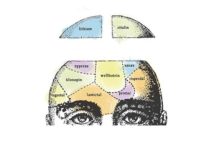A recent article published in Psychopathology explores healing factors associated with the alternative Soteria approach to the treatment of psychosis. The Soteria model relies on personal relationships, interactive activities, and minimal use of psychiatric medication within a comfortable “living community” as opposed to a conventional psychiatric setting. The authors explain how these and related factors promote healing for individuals suffering from schizophrenia syndrome.
“Soteria represents an alternative approach to the treatment of acute psychosis providing a community-based social milieu, personal relationships (“being-with”), and meaningful shared activities (“doing-with”) along with minimal neuroleptic medication,” write Dr. Daniel Nischk and Dr. Johannes Rusch.

The history of Soteria as an approach dates back to 1971 when Dr. Loren Mosher of the National Institute for Mental Health opened the first “Soteria House” in Santa Clara, California. Although Dr. Mosher’s radical ideas led to a resignation from the NIMH, his work has expanded across the globe, with houses in Hungary, Vermont, and Israel, to name a few.
Soteria is well known for its non-medical approach, providing first experiencers of acute psychosis a “safe haven” during such difficult extreme states. This non-medical approach includes a comfortable and home-like residence, layperson staffing, and involvement in everyday life relationships and activities as opposed to the artificial situation of a psychiatric ward.
Research from the original Soteria House pointed to positive outcomes, such as benefits related to psychopathology, work, social functioning, and discontinuation of psychiatric medication.
Soteria‘s core principles were developed by Loren Mosher and Luc Ciompi over 30 years and include:
- “The provision of a small, community-based therapeutic milieu (akin to a living community);
- A significant proportion of layperson staff;
- The preservation of personal power, social networks, and communal responsibilities;
- A “phenomenological” relational style which aims to give meaning to a person’s subjective experience of psychosis by developing an understanding of it by “being with” and “doing with” the clients; and
- No or low-dose antipsychotic medication, with all psychotropic medications being taken by choice and without coercion.”
The current article uses phenomenology and an analysis of the social environment of the Soteria house to uncover the healing mechanisms of the treatment model. Many of the authors’ insights are derived from experience with the Soteria House Reichenau in Germany, as well as previously published accounts of the Soteria model. The authors describe a phenomenological understanding of schizophrenia, followed by an analysis of how the Soteria environment provides an opportunity for individuals to recompose a disordered sense of self safely.
Dr. Nischk and Dr. Rusch begin by explaining that some professionals view schizophrenia as a “disorder of the minimal or core self.” In other words, the underlying sense of being an “I” who is capable of thinking, feeling, and acting on one’s own is disturbed. This leads to a chaotic organization of reality, from fluctuating self-awareness to difficulty navigating a shared social world with others. Anomalous psychotic experiences, such as delusion and paranoia, are described as an attempt to make sense of this fundamentally disordered self-and-world awareness.
“From these basic disturbances, a host of consequential and compensatory experiential alterations may develop, including an abnormal sense of consciousness and presence, altered bodily experiences, and a fragile self-other distinction.”
They also link this disturbed core self to social life, stating that the confusion of psychosis coincides with an inability to judge the boundaries between self and other. The core self is not merely “inside” but is related to difficulties establishing an “I-Thee” relationship that would allow an understanding of oneself as an “I” in the first place.
“The therapeutic challenge may thus consist in providing a social milieu that considers the fragile interpersonal boundaries while offering opportunities for engagement.”
One of the effects of this core self-disturbance is difficulty navigating complex environments. The authors explain that conventional psychiatric wards often have strange and alienating lists of rules and social demands, which can confuse people experiencing psychosis. The Soteria house, on the other hand, establishes a “normal” environment. This can be as simple as a coffee machine, a table with chairs, and a deck of cards, all situated within a small and “cozy” setting with carpet to dampen excess noise.
Social roles are also well-defined, such as “guest” and “host” rather than the complex hierarchy of a psychiatric hospital. The authors argue that this “normal” kind of environment is less confusing and can allow a more relaxed and familiar world for individuals to navigate, ultimately reducing emotional tension.
One of the pillars of the Soteria model is what the authors call “being-with.” This is described as similar to the original caretaker-infant relationship, out of which the core self is established developmentally. Because psychosis is marked by difficulties with the self-other relationship, it is believed that sharing space with individuals experiencing psychosis can help them begin to develop a sturdier core self. This is achieved through a caring, attentive form of relating, corresponding to what the authors call “synchrony” or “intercorporality,” explained as the natural rhythm of “gazes, gestures, and affective responses.”
Individuals with a disturbed core self can begin to safely probe and test against the boundaries of the people spending time with them, leading to a stronger ability to self-reflect and see oneself as an individual. This may look like the natural engagement of sitting and talking, taking walks together, or performing mutual tasks.
“This may prepare the ground for other acts of selfhood, such as exchanging first- and second-person accounts, distinguishing fantasies from perceptions, verbalizing diffuse self-disturbances, or contextualizing experiences with respect to time and place, again approximating the corresponding process during infancy and childhood. Eventually, a third-person perspective may reemerge, from which the individual can reflect on his or her assumptions and experiences.”
A second pillar is called “doing-with.” This is described as an extension of “being-with” in the context of the Soteria social environment. Cooking, cleaning, and other mutual tasks provide an opportunity for further social engagement and consolidation of a stronger core self, in addition to building essential life skills which are often impaired in individuals who have a schizophrenia diagnosis.
The effects of “doing-with” cover everything from strengthening these necessary social and life skills to building a more coherent “motor schema,” as individuals experiencing psychosis often struggle with a sense of fragmented body and mind. Bodily repetition and problem-solving, grounded in a safe social environment, can provide a healing space for this fragmentation. These tasks can help to re-train concentration and memory skills, rebuilding the social, cognitive, emotional, and bodily foundation of the core self.
“Therefore, doing-with as a holistic way of mutually assigned communal responsibilities offers multiple pathways of promoting the restitution of a vast array of aspects of selfhood underlying many higher skills, both motor and social,” the authors write. “Within a broader context, this daily collective practice might support people with the schizophrenia syndrome in reestablishing commonsensical ways of interacting and thereby in re-inhabiting their social world…”
****
Nischk, D., & Rusch, J. (2019). What makes Soteria work? On the effect of a therapeutic milieu on self-disturbances in the schizophrenia syndrome. Psychopathology, 1-8. (Link)















The technical descriptions seem to me, to “medicalise” the situation.
If a person has a “breakdown” they might benefit from the support of genuine people to get back together again. I think this might be why Soteria is successful.
According to Dr RD Laing, he once took a “chronic schizophrenic” teenager into his family and treated him normally and the “chronic schizophrenic” teenager made full recovery.
The hospital wards are about the promotion of sickness and remaining sick. The rules are likely to be wide open to exploitation and game playing.
Report comment
If I were convalescing, I’d prefer going to the Earth House myself, but I’m probably a lot more prosaic than many of the MIA readers. I’m also less likely to extract philosophical meaning from the bulk of my dysperceptions, when I have them. I also have to be sometimes reminded to take my vitamins and avoid junk food.
Report comment
Good article. I do much of this with/for my wife. The only thing I’d suggest is that the disturbed core self is because of dissociation…
Sam
Report comment
Removed for moderation.
Report comment
Removed for moderation.
Report comment
This is what I also have found to help.
What psychiatry does with its diagnosis is something akin to — although not as accurate as — monitoring the symptoms of someone that has a broken leg, or a sprained ankle, then anesthetizing the problem (the pain). And when along the line there’s more problems because you can’t walk around with an anesthetized broken leg or ankle without doing more damage, they make more of the same calls for treatment. For all I know in the end the leg is amputated and labeled as having genetic faults. Only the symptoms they are diagnosing often don’t really interfere with a person’s life as much as a sprained ankle or broken leg does, but the diagnosis does, and was the person left alone they would do better.
Places like the Soteria house actually see there’s a broken leg or a sprained ankle, and treat that.
IMHO
Report comment
I use a similar analogy of a broken leg, though I use a broken knee. If you only treat the pain and not the wound, it won’t heal, and the person will probably limp the rest of their life (at best) or worsen the injury and face more pain and damage. https://pennikolpin.com/elixir/analogies/broken-knees/
I have also thought of the progression towards an amputated leg. My grandpa fought in WW1. He was shot in the leg and was initially thought to have died from his wounds. He was placed in the morgue and had a toe-tag. He either moaned or moved his toe and someone realized he was still alive. The doctors operated and removed the bullet. Though after he woke up, he felt along his shin and tried to tell them that they missed something. He could feel that something was still in there. The doctors didn’t listen to him and they told him they got everything.
They were wrong. Gangrene set in and a few days later, he had to have his leg amputated.
So your analogy resonates deeply with me.
Report comment
I find this theorizing incongruent with Soteria as it was developed by Loren Mosher. I believe that the cited location of the first Soteria is also inaccurate. (I understood it was in San Jose.) The importance of the relationships with workers who were chosen for personal and social qualities of flexibility, curiosity, and non-conformance among other characteristics. The authors of the study as represented in this report, seem to have imposed their own pathologizing theories, which would clearly influence the milieu and values of a current Soteria. Mosher designed and researched the project and Alma Menn, a social worker, was key in putting it into practice. The people chosen to work there, while practicing being-with, did not do so to fit the theory espoused by these researchers. They accepted roles as guides accompanying people through meaningful experiences. It saddens me that something simple and human has been reduced to theories divorced from the experiences of people. Mosher was very influenced by R.D. Laing, who also wrote about relationships between self and other; however both Laing’s writing and Mosher’s respected human experience and its complexity without such reductions.
Report comment
Healing is not redress for wrongs. It is still putting the blame back onto the survivor.
Perceval and the Red Knight
http://pre15.deviantart.net/25e6/th/pre/f/2011/276/2/a/perceval_and_the_red_knight_by_epictones-d4bqgwu.jpg
Report comment
I first broke down and became paranoid and suicidal at the age of 17 when my mother sent me to my local GP who sexually molested me and when I told her she refused to send me to another doctor and nursed me at home with her. She didn’t use any techniques just catered for my needs and fed me and took all responsibilities from my shoulders. She help me sleep with a few glasses of tonic wine and basically both my parents were involved with my total care.
I spent the ages of 17 to 23 drug free and never consulted a psychiatrist and my parents always looked after me at home. There came a time that this didn’t help and suicidal once again i consulted a psychiatrist and went down the road of drugs.
My parents were intelligent people but didn’t have any literature at their finger tips on just how to help me and I wonder is “being with” and “doing with” the answer?
I don’t think the answer to really making a difference in the lives of people who get psychotic has been found because it’s a social thing and once society accepts that psychotic people are not failures but can be creative and industrious and contribute to the whole of the herd then things will change for the better.
At present it is accepted people like me have an illness that needs treating which puts us in an inferior light in most people’s eyes. If we take away that people like me do not get sick then that can only be a step forward.
Report comment